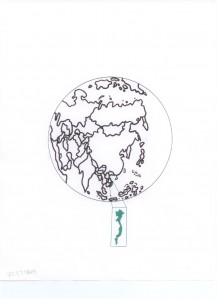VIETNAM
A. THE COUNTRY
The Socialist Republic of Vietnam is a long, narrow country occupying
the entire eastern and southern coastline of Indochina. There are 58
provinces and 5 centrally controlled municipalities. The Communist
Party controls all state policy and activity, and is closely tied to the
powerful government and military. Reforms begun in 1986, after decades
of war, have modernized the economy, and seen the emergence of a young
middle class. There remains a large gap between urbanites and the rural
poor. Serious human rights violations continue especially toward
minorities, ethnic or religious. Key exports are rice, coffee, tea,
rubber, and seafood products. Manufacturing, information technology and
high-tech industries are a large part of the economy.
B. THE PEOPLE
The population is over 89 million. The official language is Vietnamese,
and there are 106 indigenous languages.
84% are Vietnamese, 4.3% Mon-Khumer, 3% Zhuang, 1.9% Thai-Dai, 1.5%
Hmong/Miaco, 1.1% Cham, 1.4% other Southeast Asian, 2.6% Chinese.
C. RELIGIONS AND CHRISTIANITY/PENTECOSTALISM
The deepest spiritual allegiance is not to Communism, nor to the
traditional blend of Buddhism, Taoism and Confucianism. It is the
veneration and worship of ancestors.
The government requires registration of churches for operation – yet
most remain unregistered.
~52.5% are Buddhist, ~23% non-religious, ~9.5% Christian, ~7.9%
Ethnoreligionist, 5.4% other, 1% Chinese, ~0.4% Baha’i, 0.08% Muslim,
0.07% Hindu. Of those in the Christian category:
14% are Protestant, 94% are Independent, 1% Anglican, and 1% Catholic.
Evangelicals are 1.8%, Charismatics are 0.8% and of those, 0.1% are
Pentecostals.
Donna Siemens
References:
http://en.wikipedia.org
Operation World, Jason Mandryk. Colorado Springs: Biblica Publishing, 2010.

